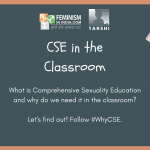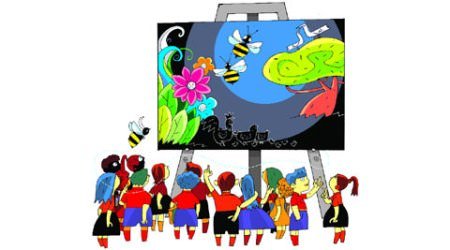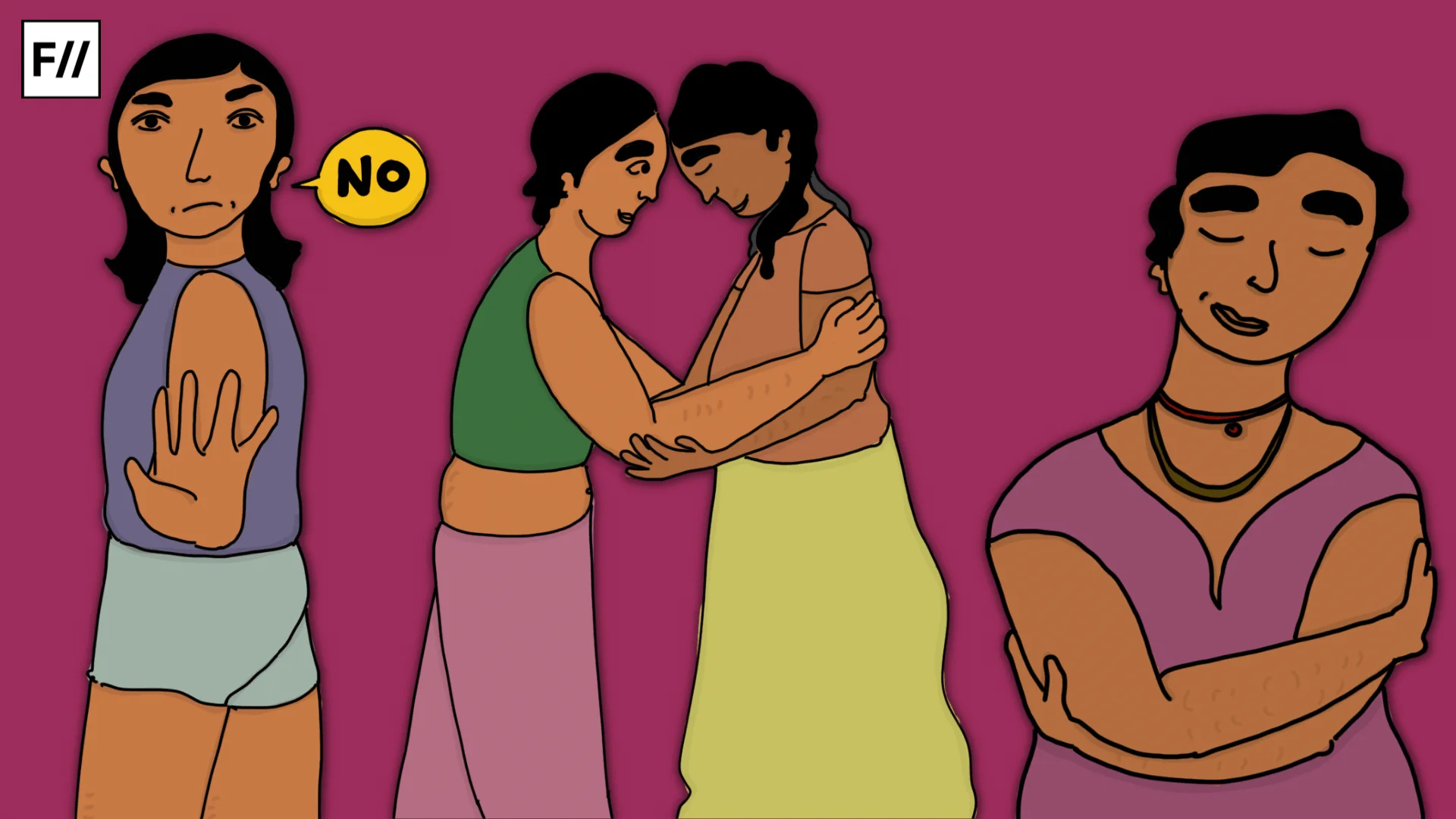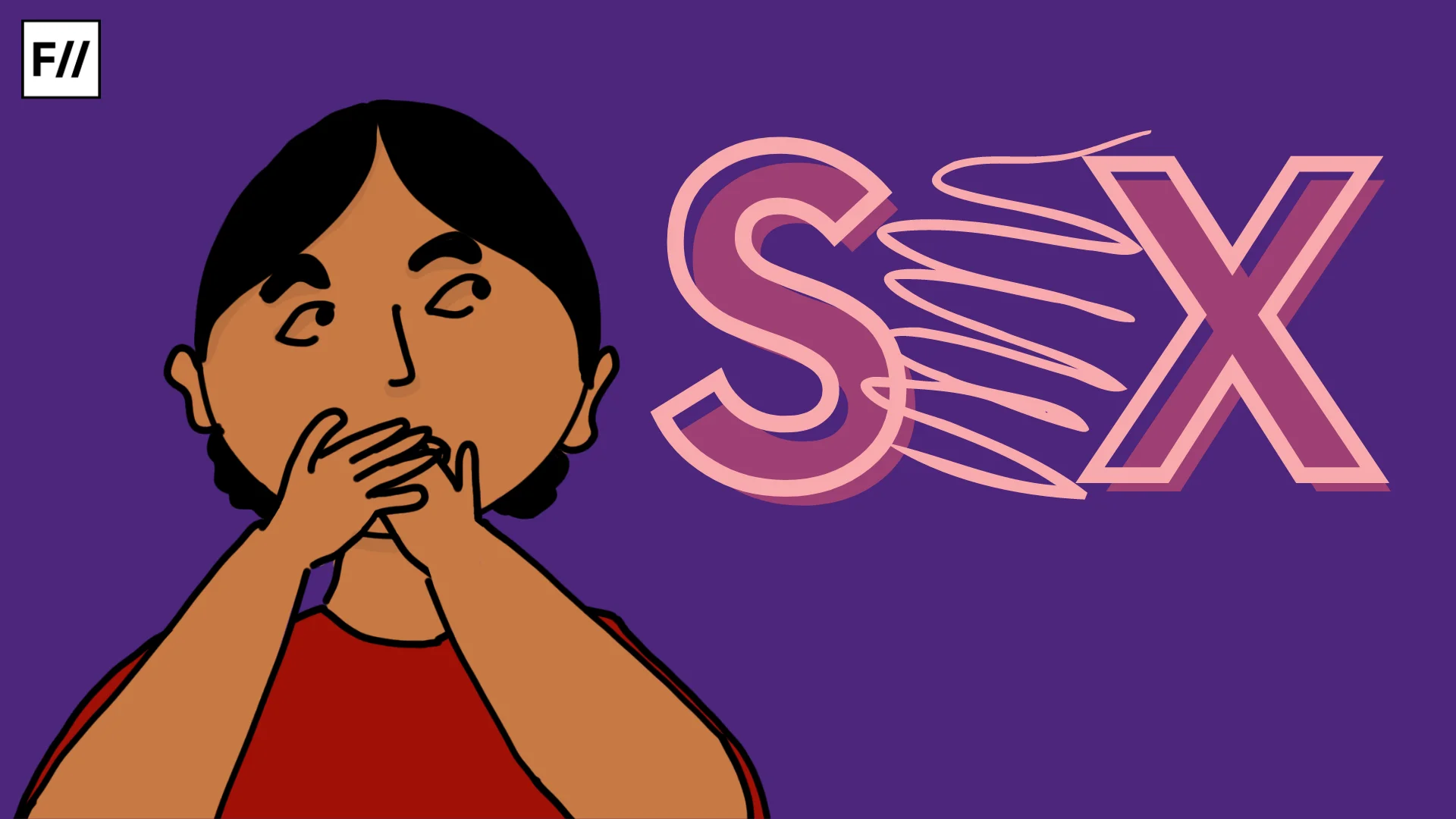 Editor’s Note: Feminism in India in collaboration with TARSHI have launched a campaign ‘#WhyCSE – CSE In The Classroom’ to emphasize the need for Comprehensive Sexuality Education in schools. Read more about the campaign here.
Editor’s Note: Feminism in India in collaboration with TARSHI have launched a campaign ‘#WhyCSE – CSE In The Classroom’ to emphasize the need for Comprehensive Sexuality Education in schools. Read more about the campaign here.Sexuality education has met with a lot of resistance in India. Although some attempts have been made to incorporate sexuality education in schools, or encourage parents to talk about sexuality related issues with their children, they have not succeeded in doing so.
A variety of factors impede these efforts, ranging from cultural resistance to misunderstandings about what sexuality education entails, to lack of socio-political will. In a two-part article, we will explore a few common arguments made against Comprehensive Sexuality Education and discuss why they might not work in today’s social and cultural context.
Why Sexuality Education?
Sexuality is a much broader term, and encompasses much more than sex. While sex refers to the biological characteristics that define humans as well as the act of sexual intercourse, sexuality is an umbrella term, which, is defined by World Health Organization (WHO) as “A central aspect of being human that encompasses sex, gender identities and roles, sexual orientation, eroticism, pleasure, intimacy and reproduction… Sexuality is influenced by the interaction of biological, psychological, social, economic, political, cultural, legal, historical, religious and spiritual factors.”
Sexuality goes much beyond sex, and is something that is central to our lives from birth till death. But the most common criticism of sexuality education pits it against the Indian culture.
The ‘Culture’ Factor
The strongest and most common argument against sexuality education is that it goes against Indian culture and values. Although India has a rich history of celebrating pleasure and sexuality, even talking about sex has been taboo here. Especially when it comes to children, conversations about sex and sexuality are considered to be too ‘adult’ for their understanding. This means that talking about everything from sexual intercourse, sexual organs, breasts, menstruation, gender identity, feelings of attraction for another person, child sexual abuse, self-exploration are all off limits.
Most public and private schools in India do not provide any kind of sexuality education. The few schools that do, focus on health and hygiene in those classes. A study shows that a majority of Indian parents also do not discuss sexuality with their children. This is because the family’s conservative social fabric does not allow for an open space wherein conversations about issues related to sexuality can be initiated. And since the adults did not receive sexuality education themselves, and do not have a culture of discussing their own sexuality issues with others, they fail to see the need for formal comprehensive sexuality education. There is also a common concern that these ‘unnecessary’ talks will disrupt the social order or affect family values and culture that has been held strongly for all these years.
This cultural resistance does not emerge only from parents and teachers. Often the students themselves are uncomfortable having these conversations in public, as shown by this study, because adults have never discussed these topics with them or shushed these conversations.
This leads to the question of what is ‘culture’ – is it static, unchanging? Or does it change over time, with practices that are no longer relevant to our lives or our relationships with fellow humans, being discarded and newer ones taking their place? For instance, Sati or the idea that women cannot work outside their homes were ‘integral’ parts of our culture, but we have recognised that they are irrelevant to our lives today. So why not CSE?
‘Encouraging’ Sexual Activity
Another common criticism of sexuality education is that it teaches youngsters how to have sex, thus allowing and even encouraging them to engage in sexual activity. But a study conducted by World Health Organization (WHO) shows that sexuality education actually delays the start of sexual activity, and encourages safe sex practices.
But the belief that talking about sex leads to promiscuity and irresponsible sexual behaviour still exists. This is further strengthened by India’s paranoia against premarital sex. Since Indian culture places the honour of families, communities, and often the entire nation on women’s sexuality and their virginity, premarital sex is a huge taboo. The underlying fear is a loss of control on women’s sexuality. While it is okay for men to engage in sexual activity (‘boys will be boys’), women are expected to remain sexually inactive and positively clueless about sex until marriage, and suddenly embrace sex as a part of their marital lives.
Also read: Women’s Sexuality In The Indian Nationalist Discourse
Additionally, not giving sexuality education does not stop youngsters from knowing about sex, or exploring their own sexuality. They are exposed to sex from an early age through films, books, video games, music and the internet. And yet, a study found that 42-52% of youth feel that they do not have adequate knowledge about sex. Because these sources often provide romanticised, hyper-sexualised and inaccurate portrayals of bodies and relationships, leading to anxiety, shame and abuse among the youth. CSE steps in here by providing accurate information from a trustworthy source that they can rely on.
In fact, the lack of comprehensive sexuality education means that youngsters rely entirely on the increasingly accessible pornography for information. This can create unrealistic expectations of sexual relationships or intercourse in real life, and can often lead to unsafe practices such as having sex without a condom, which further increases chances of pregnancy, STIs etc. Watching porn can raise questions about body image, sexuality and identity, which are left unanswered in a repressive culture. In addition to this, mainstream porn is mostly shot from the male gaze, and can lead to objectification and toxic masculinity.
This does not mean that porn itself is bad, but it is certainly not a substitute for CSE. As witnessed by the porn ban in 2015, restricting porn is also not a solution to India’s sexuality education problem. In fact, porn could be used to start conversations around sex and sexuality.
Why CSE matters
Perhaps owing to these ideas around CSE, there has been resistance to implementing CSE in schools from a variety of stakeholders, ranging from parents to teachers to governments to school administration. Though the Central Government has made efforts to introduce some form of sexuality education within the curriculum, there have been conscious efforts to remove the words ‘sex’ and ‘sexual’ from the programs, and give them ‘wholesome’ names such as the Adolescence Education Program (2007) and National Adolescent Health Programme (2014). This again points to an erasure of issues surrounding sex and sexuality.
Finally, in 2017, the Ministry of Health and Family Welfare launched the Saathiya resource kit for young people, which was praised for its progressive content, from normalising same sex attraction to emphasising the importance of consent. The kit identifies six important aspects of adolescence – nutrition, sexual and reproductive health, non-communicable diseases, substance misuse, injuries and violence (including gender based violence) and mental health. However, it currently relies on peer educators and the Saathiya Salaah app to disseminate this information, which might not be accessible to all youngsters in the country.
Comprehensive Sexuality Education is much more than sex education: it focuses on the individual, their identity and sexuality. It covers the physical, biological, psychological and social aspects of a person’s being and sexuality. It covers issues like bodily changes and differences, and relationships with other youngsters, teachers, and society at large, to discussing important social issues like bullying, abuse, infections, and breakups. And yes, it also provides information about sex along with the importance of consent and safety, all in age and stage appropriate terms.
In a culture where children and young people have to confront silence, misinformation and moral-laden ideas about sexuality, leading to anxiety, worry, unsafe sexual behaviour or sexual abuse, CSE is a necessity. A report to the United Nations Human Rights Council states sexuality education as a human right that takes precedence over issues of culture or morality.
And although the youth of India need to know about sex, they need Comprehensive Sexuality Education more – a guide to help them navigate puberty and adulthood, understand themselves better and build healthy relationships with others.
References
- Growing Up in a Globalized World: An International Reader by Vinod Chandra
- Adolescent sex education in India: Current perspectives
- Who knows the Meaning of Sex Education in India
- On the Lack of Comprehensive Sexuality Education in India , report to the United Nations Human Rights Council
- Launch of Saathiya Resource Kit
Featured Image Credit: The Indian Express




